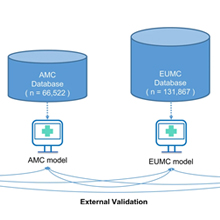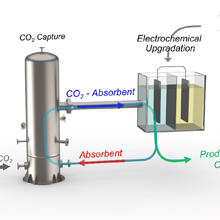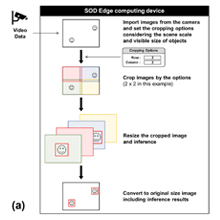본문
Small object detection (SOD) system for comprehensive construction site safety monitoring

by Prof. Sungjoo Hwang
Architectural and Urban Systems Engineering
PURE Research Profile
hwangsj@ewha.ac.kr
Although object detection is essential for recognizing hazardous situations in construction sites where various objects coexist, existing systems fail to ensure real-time accuracy and flexibility in detecting small objects in various scene scales. The main challenge is the difficulty associated with integrating information from multiple objects of different sizes and scales. Because various objects, such as workers, materials, and equipment, continuously move and interact with each other at construction sites, it is imperative to detect the aforementioned objects simultaneously. However, most object-detection algorithms have been developed for medium- and large-sized objects, making detecting small objects difficult. For example, it is difficult to detect workers when using the existing object-detection algorithms at construction sites because they are relatively small compared to the surrounding objects, such as equipment and materials. Another problem with computer vision-based site monitoring is the difficulty of processing the massive amount of collected video data, including multiple objects. Site monitoring systems need to collect high-resolution images and analyze them in real time, which requires considerable computing power and memory. In addition, server overload problems may occur in data transmission to the central server.
Therefore, we developed a comprehensive site monitoring system for continuous multi-scale object detection at construction sites and large-scale plants. Specifically, the proposed site monitoring system incorporates a small object detection (SOD) algorithm that infers objects after cropping high-resolution images into multiple segments set by the user’s desired flexibility (Figure 1). In addition, the proposed system used edge computing devices that can simultaneously collect and analyze data, thereby reducing real-time inference latency to avoid excessive computational resources and lessen network traffic. The SOD outperforms existing systems, especially regarding small object detection accuracy and flexibility for detecting objects of different sizes. The SOD can detect multi-scale objects not initially detected by existing methods (i.e., workers) to large construction equipment (Figure 2). We also confirmed that the inference time lost was nominal, verifying its real-time applicability. The proposed system facilitates real-time and comprehensive site monitoring by reducing computational resource requirements for detecting objects of varying sizes, thereby improving site monitoring and safety management.

Figure 1. The Overview of SOD: (a) Image cropping and inference on a SOD edge computing device; (b) Application of Buffer Regions in Image Cropping

Figure 2. Example of SOD
* Related Article
Siyeon Kim, Seok Hwan Hong, Hyodong Kim, Meesung Lee, Sungjoo Hwang, Small object detection (SOD) system for comprehensive construction site safety monitoring, Automation in Construction, Volume 156, 105103, ISSN 0926-5805, December 2023











